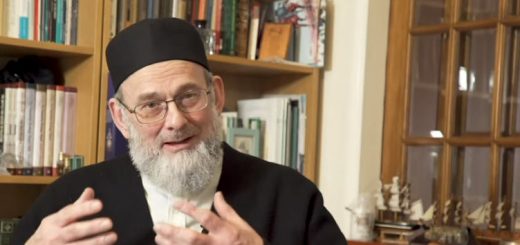WHEN ISLAM WAS A MODEL OF TOLERANCE FOR EUROPE
WHEN ISLAM WAS A MODEL OF TOLERANCE FOR EUROPE
When Islam Was a Model of Tolerance for Europe
Sh. Ahmed Arafat
“Let the Muslim be my master in outward things rather than the Latin dominate me in matters of the spirit. If I am subject to the Muslim, at least he will not force me to share his faith. But if I have to be under Frankish rule and united with the Roman Church, I may have to separate myself from God.” [1] The Patriarch Michael III of Anchialos (1170:1178) described the religious situation in the 12th Century. On the eve of the fall of Constantinople in 1453, this view was more bluntly expressed by Duke Lucas Notaras in his famous words: “Better the turban of the Turk than the tiara of the Latin [Pope].” Moreover, during the Dutch Revolt, the phrase “Rather Turkish than Popish” was coined to express that life under the Ottoman Sultan would have been better than life under the Catholic King of Spain.[2] Some used to wear a Dutch crescent-shaped medal, with the slogan “Rather Turk than Pope.”

Half Moon Geuzen Medal, worn by the Dutch from 1566 to 1574
These incidents might be shocking for the Islamophobes whose campaigns against Islam became a career or a condition for holding some positions! It might equally be incredible for the general public who constantly receives negative images of Islam and Muslims from the anti-Muslim media that vigorously works hard to present “The Islamic Threat” and create the stereotype of the Muslim as violent and intolerant of others faiths. However, these historical incidents embody the many Islamic teachings on coexistence, not just tolerance, with other religions. This article seeks to identify some of the roots of religious tolerance in Islam and how European reformers, who were ridiculed as ‘Mahometans’, came to admire the Islamic model of tolerance and called for adopting the religious diversity as ensured by the Muslim sultans.
At the time when many medieval Christian rulers raised the motto “One State, One Law, One Faith” as their government policy which inevitably led to many religious persecutions of different sects within Christianity, Islam introduced an utterly different motto “There is no compulsion in religion” (Quran 2:256) which laid down the foundation for religious coexistence and non-interference with the beliefs of other religious communities. Even though this text was violated in a few cases in later history, Bernard Lewis affirms that “In the early centuries of Islamic rule there was little or no attempt at forcible conversion, the spread of the faith being effected rather by persuasion and inducement.” [3]
What is so special about this Islamic motto? First, according to the above-cited verse, religious freedom was expressed as ‘a statement,’ not ‘a command’. The verse did not say, “Do compel others to leave their faith or embrace Islam;” rather, according to Arabic rhetoricians, the statement style indicates that religious tolerance has to be viewed as a nonnegotiable fact that cannot be rescinded, simply because compulsion is not an accepted conversion as God judges the heart, not the lip. Second, this verse was revealed in Madina when the Muslim community was considerably strong and dealt with Jews and Christians therein. Third, some people or systems may endorse tolerance in areas you do not value the most; for instance, a religious practice could be tolerated because it is not crucial in a specific worldview, whereas some political views could be suppressed in the same worldview. However, Islam adheres to religious freedom for non-Muslim communities even though the Muslim civilization is theocentric.
Above all, this motto was backed by a positive attitude toward human nature in general and the Judeo-Christian tradition in principle. Contrary to the Christian belief in original sin and the assumption that non-Christians are sinning even during their sleep, Islam restored the faith of the early prophets who affirmed that people are born sinless and that sins are acquired, not inherited. Furthermore, based on its affirmation of the unity of the Divine message, Islam accepts Moses and Jesus as great prophets who belong to a long chain of prophets with Muhammad as the Seal of all Prophets. Accordingly, Muslims do not see themselves following one of the conflicting religions but embracing the same faith shared and taught by God’s prophets.
Due to this optimistic worldview, medieval Muslim history records unique moments of free-thinking and interfaith dialogues and debates about religious and philosophical issues, using reason alone with no references to one’s scripture. In al-Humaydi’s (d.) biographical work Jadhwat al-Muqtabis, tells the story of Abu’ Umar ibn Saadi who records his experience as follows:
“At the first session, I attended I saw a majlis [gathering] which included every kind of group: Sunni Muslims and heretics, and all kinds of infidels: Majus, materialists, atheists, Jews, and Christians. Each group had a leader who would speak on its doctrine and debate about it. Whenever a leader arrived, from whichever of the groups he was, the assembly rose for him, standing on their feet until he would sit down, then they would take their seats when he sat. When the majlis was jammed with its participants, and they saw that no one else was expected, one of the infidels said, “You have all agreed to the debate, so the Muslims should not argue against us based on their scripture, nor based on the sayings of their prophet, since we put no credence in it and do not acknowledge him. Let us dispute with one another only based on arguments from reason, and what observation and deduction will support.” Then they would say, “Agreed.” Abu Umar said, “When I heard that, I did not return to that majlis. Later someone told me there was another majlis for discussion, so I went to it, and I found them involved in the same practice as their colleagues. So I stopped going to the majlis of the theologians, and I never went back.” [4]
Besides the freedom of faith granted to non-Muslim communities, this sense of religious tolerance, coupled with Muslims’ interest in and sponsorship of all fields of knowledge; led to the flourishing of religious study in non-Muslim faiths as the leaders of these faiths were motivated by the academic disciplines Muslim scholars expanded or even originated. For instance, the Jews, who suffered persecutions under Christian rule on account of the accusation of killing the Messiah, were encouraged, under Muslim law, to engage in the philosophical, legal, ethical, linguistic, and religious discussions of the day. Saadia’s The Book of Beliefs and Opinions, Maimonides’ The Guide for the Perplexed, Ibn Paquda’s Duties of the Heart, Solomon ibn Gabirol’s The Improvement of the Moral Qualities and Ibn Kammuna’s Examination of the Three Faiths, Judah Halevi’s The Book of Refutation and Proof on the Despised Faith and Al-Qirqisani’s The Book of Lights and High Beacons or Kitāb al-Ānwār wal-maraqib are just a few examples of medieval Jewish works initially written in Arabic and greatly influenced by Muslim works and spirit.
Many European theologians, philosophers, and reformers noticed this religious tolerance and advocated it as a model of religious tolerance for Europe to follow. For the sake of brevity, two tolerance advocates will be cited here to illustrate the European fascination with the Islamic model of tolerance as part of their attempt to encounter the wave of inquisitions and religious persecutions.
First, based on a Protestant city council, Michael Servetus (d. 1553) was tried and burned alive for heresy as he denied the Trinity, the incarnation of Christ, and some other doctrines. Trying to put an end to such bloody acts, Sebastian Castellio (d. 1563) records this testimony:
“At Constantinople, there are Turks, there are Christians, and there are also Jews, three peoples widely differing in religion. Nevertheless, they live in peace, which certainly they would not do if there were persecution. A careful investigation will reveal that persecutors have always been the cause of great troubles. Wherefore, Princes and Magistrates, if you desire peace and tranquility, do not listen to those who invite you to persecution, for they are seditious …” [5]
Second, based on perjured witnesses, a Protestant figure Jean Calas was accused of killing his son Marc-Antoine to prevent his conversion and executed in 1762. Following the trial of Jean Calas, the famous French philosopher Voltaire writes his Treatise on Tolerance to display Catholic fanaticism. Among the examples he cited as a model of religious tolerance, Voltaire calls on his people:
“Let us reach out from our narrow little sphere for a moment and examine what goes on in the rest of the globe. The Turkish prince, for example, rules peacefully over twenty races of different religious convictions; two hundred thousand Greeks live in Constantinople in perfect safety, and the Mufti himself nominates and presents the Greek patriarch to his emperor; there is even a Roman Catholic patriarch living there. The Sultan nominates Catholic bishops to some of the Greek islands, with the following words: “I commend him to go and reside as bishop on the isle of Chios following its ancient customs and vain ceremonies.” This empire is stuffed with Jacobites, Nestorians, Monothelites, Coptics, Christians of St John, Jews, Gebers, and Banians. The annals of Turkey bear no record of a revolt raised by any of these religious communities.” [6]
These two examples illustrate that, in the middle of religious persecutions in Europe, some tolerance advocates made allusions to the Islamic model of governing to conjure up images of tolerance and coexistence to save medieval Europe from religious prejudice and pave the way for the Enlightenment. Religious tolerance with other faith communities has been part and parcel of the Muslim civilization. For those who want to know whether ISIS is true Islam or Un-Islamic, ask Sebastian Castellio or ask Voltaire!
[1] Christopher Allmand, Rosamond McKitterick (ed.), The New Cambridge Medieval History: Vol. 7, Cambridge University Press, p. 782
[2] For more details, see Benjamin Schmidt, Innocence abroad: the Dutch imagination and the New World, Cambridge University Press.
[3] Bernard Lewis, The Jews of Islam, Princeton University Press, p. 17
[4] Abu’ Abd Allah Al-Humaydi, Jadhwat al-Muqtabis, Cairo, 1953, pp. 101-102, cited in The Majlis: Interreligious Encounters in Medieval Islam edited by Hava Lazarus-Yafeh
[5] Sebastian Castellio, On Heretics: Whether They Are to Be Persecuted and How They Are to Be Treated, transl. R Bainton, Columbia University Press, p. 225
[6] Voltaire, Treatise on Tolerance, Cambridge: Cambridge University Press, 2000, p. 20-21
Number of View :1422














